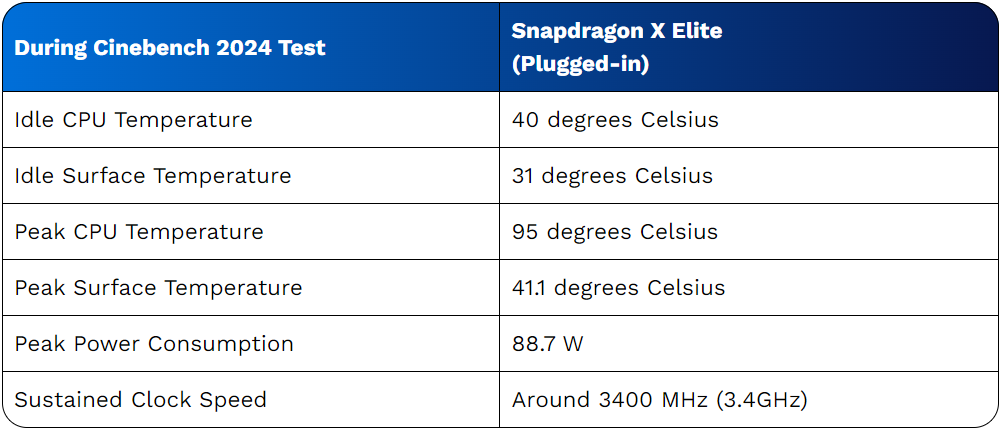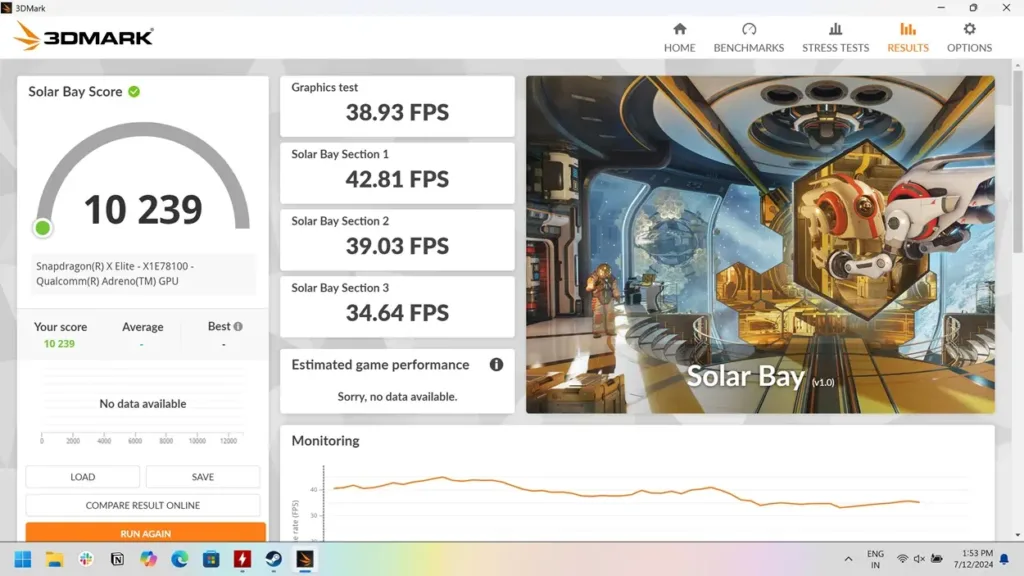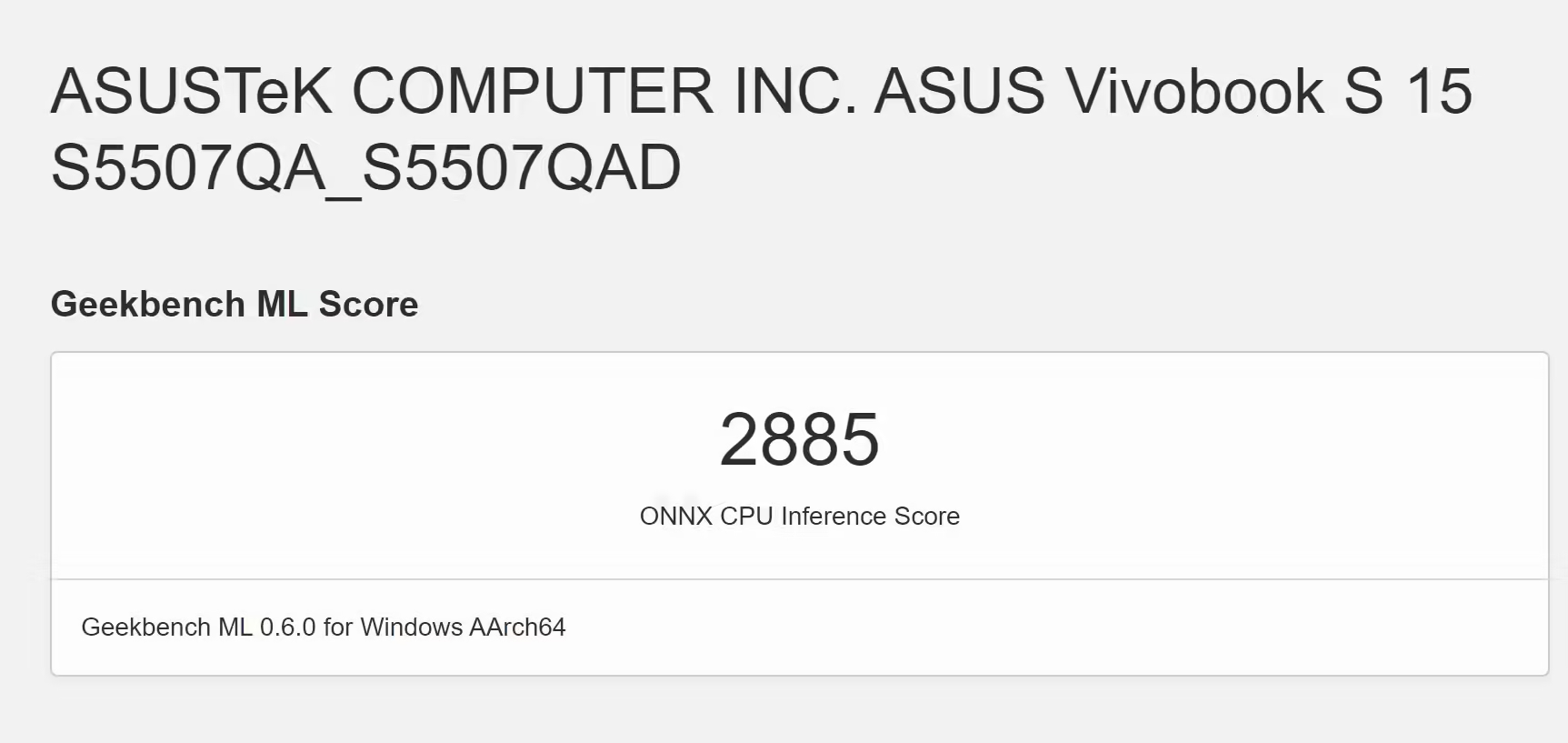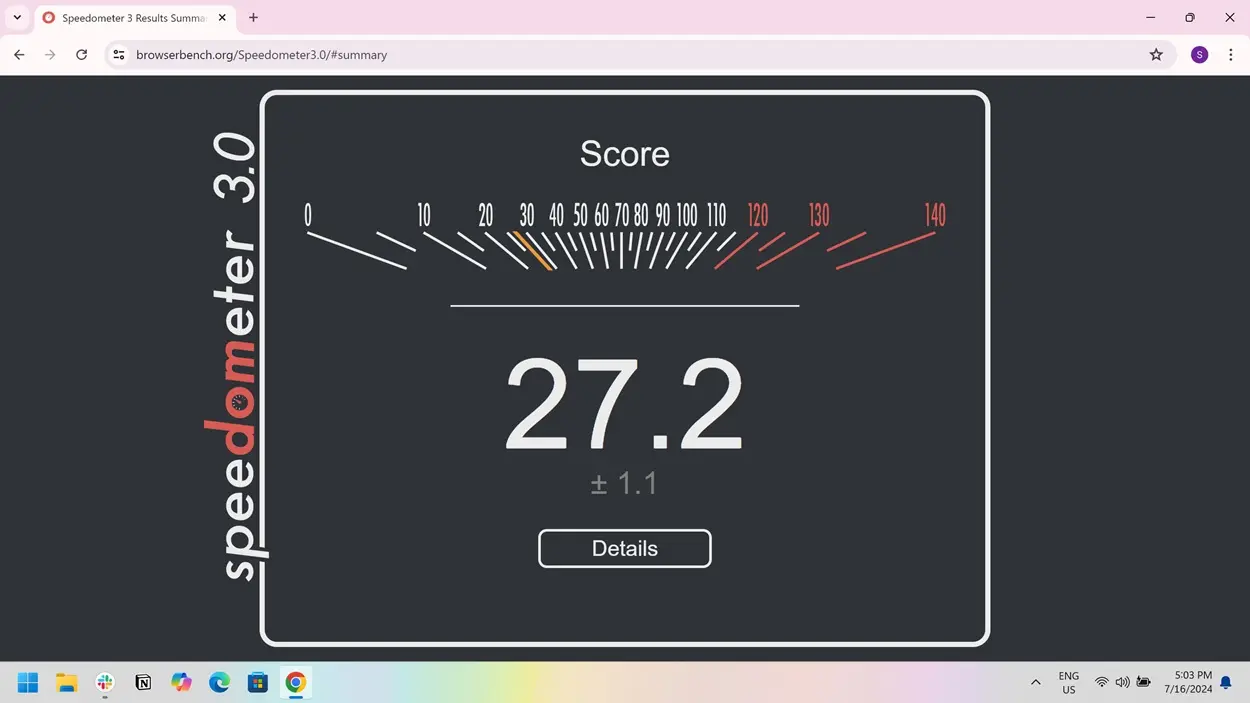
Qualcomm’s Snapdragon X Elite has officially launched, and laptop manufacturers are now introducing several Copilot+ PCs to the market. We recently had the opportunity to test the Asus Vivobook S15, which comes equipped with the new Snapdragon X Elite chipset. To evaluate its performance, power consumption, clock speeds, and more, I conducted comprehensive benchmarks of the Snapdragon X Elite chipset (X1E-78-100) using various tools. Let’s dive into the results.
Testing Methodology
- We benchmarked the Asus Vivobook S15, which is powered by the Snapdragon X Elite chipset with the X1E-78-100 SKU, the third variant in the series. This chipset features 12 CPU cores and a maximum clock speed of 3.4GHz.
- Prior to running any tests, we updated Windows 11 to the latest version (Windows 11 24H2, Build 26100.1150) and updated the Adreno GPU driver to version 31.0.56.0.
- All tests were conducted in Best Performance mode, with the MyASUS app settings adjusted to Full-speed mode to maximize the processor’s capabilities.
- The display refresh rate was configured to 120Hz.
Geekbench 6 CPU
We conducted the Geekbench 6 CPU test on the Snapdragon X Elite (X1E-78-100) both while plugged in and on battery. We observed minimal differences in CPU performance between the two conditions. All tests were performed in Best Performance mode with Full-speed mode enabled in the MyASUS app.

While plugged in, the Snapdragon X Elite achieved a single-core score of 2,441 points and a multi-core score of 14,050 points. On battery, it scored 2,406 points in single-core and 14,044 points in multi-core tests.

Regarding thermals, the CPU temperature at idle was 41 degrees Celsius before the Geekbench test, peaking at 75 degrees Celsius during the test. The surface temperature around the keyboard was 29.7 degrees Celsius when idle and increased to 35.5 degrees Celsius under heavy workload.

During the Geekbench CPU test, the Snapdragon X Elite reached a peak power draw of 47.6 watts. It maintained clock speeds of 3400 MHz (3.4 GHz) for an extended period, indicating that the Oryon cores did not throttle down and sustained high CPU performance for a prolonged duration.
Despite the high power consumption compared to Apple’s M-series chips, Asus deserves recognition for managing thermal performance effectively. The company uses its IceCool thermal technology, which includes two fans and two heat pipes, to enhance heat dissipation.
Overall, the Snapdragon X Elite (X1E-78-100) delivers excellent CPU performance whether on battery or power. To achieve the best performance from the chipset, you’ll need to adjust the performance profile in both Windows Settings and the MyASUS app. Be aware that this will lead to increased battery drain and louder fan noise, although the fan noise remains significantly quieter compared to x86 processors.
Cinebench 2024

Next, we assessed the Snapdragon X Elite with the Cinebench 2024 benchmark, which measures both CPU and GPU performance. In this test, the Snapdragon X Elite achieved a score of 108 points in single-core and 1100 points in multi-core while plugged in. Performance was nearly identical on battery, with scores of 104 in single-core and 1024 in multi-core tests.

During the test, the Snapdragon X Elite’s CPU temperature peaked at 95 degrees Celsius, which is notably high. The power consumption peaked at 88.7 watts, a significant figure for a mobile SoC designed for thin and light laptops. Under maximum load, the surface temperature above the keyboard increased to 41.1 degrees Celsius, which felt noticeably warm.

The frequency varied between 2.5GHz and 3.4GHz, with occasional peaks up to 3.6GHz, surpassing the rated maximum of 3.4GHz. Although we did not observe any performance degradation in full power mode, it’s important to note that the Snapdragon X Elite’s power consumption under maximum load is notably higher than anticipated.
As Qualcomm’s first PC chipset featuring the new Oryon cores, we expect that the next iteration of Snapdragon X Elite will focus on improving efficiency, aiming to align with the efficiency levels of Apple’s M-series chipsets.
Geekbench 6 GPU

To evaluate the integrated Adreno X1 GPU on the X Elite, we conducted the Geekbench GPU test using OpenCL and Vulkan APIs. Under the OpenCL API, the Adreno X1 GPU scored 20,543 points while plugged in and 20,417 points on battery. It performed better with the Vulkan API, achieving 23,635 points on power and 24,227 points on battery.

The Adreno X1 GPU in this Snapdragon X Elite SKU (X1E-78-100) operates at 1.25GHz. While the GPU’s performance is decent for light gaming, it falls short compared to competitors, such as the 8-core Apple M2 GPU, which scores over 24,000 points in the Geekbench OpenCL test.
Although the Adreno X1 GPU is adequate for light gaming, it lags behind in performance compared to other options, and improvements in software and driver optimization are needed to enhance gaming performance.
3DMark
The Adreno X1 GPU in the Snapdragon X Elite supports Microsoft’s DirectX 12 API, enabling you to play games like Cyberpunk 2077 on low settings. We tested it with the 3DMark Wild Life Extreme benchmark using the DX12 API, where it achieved 37.82 FPS and 6,316 points while plugged in.

In the 3DMark Solar Bay test using the Vulkan API, the GPU performed reasonably well, scoring 10,239 points and 42.81 FPS in Solar Bay Section 1. However, Intel GPUs in the same test typically achieve around 49 FPS and over 11,000 points. In summary, while the Adreno X1 GPU is competent, it falls short compared to integrated GPUs from Intel, AMD, and Apple.

Geekbench ML
To evaluate the AI capabilities of the Snapdragon X Elite chipset, we ran the Geekbench ML test. Using the ONNX DirectML API with the GPU, it scored 2,350 points, and with the ONNX CPU API, it achieved an inference score of 2,885 points—all while plugged in. Note that NPU support for the X Elite has not yet been integrated into Geekbench ML.

In comparison, Apple’s M3 chipset scores over 4,000 points with its Core ML CPU API and around 7,800 points for AI inference using the M3 GPU. This suggests that the Snapdragon X Elite underperforms in AI tasks compared to Apple’s M3 chipsets.
However, this disparity might be due to an unoptimized framework or insufficient hardware acceleration for ML tasks. We plan to re-run the test in a few months to see if there have been any improvements.

AI Inference Test
After the Geekbench ML benchmark, we assessed the Snapdragon X Elite’s performance in practical AI applications by installing the beta version of LM Studio and loading the Phi 3 Mini 3B model. Currently, LM Studio supports only CPU inferencing on the Snapdragon X Elite.

In our tests, the Snapdragon X Elite’s CPU achieved a response rate of 24 tokens per second, which is impressive for on-device inferencing. Another test showed a response rate of 21 tokens per second. Note that these speeds are based on the 3 billion model; larger models will result in slower token generation.
Overall, the Snapdragon X Elite performs exceptionally well with 3B and 7B models even on the CPU. Future support for GPU and NPU offloading may further boost performance.
Speedometer and JetStream

Finally, we conducted browser benchmark tests using Speedometer 3.0 and JetStream 2.0 on the native ARM64 versions of Google Chrome and Microsoft Edge. Surprisingly, Google Chrome outperformed Edge in the Speedometer test.
Chrome achieved a score of 27.2, while Edge scored 22.5 points. For comparison, the Apple M3 MacBook Air scores approximately 32 points in the Speedometer 3.0 test.

In the JetStream test, Chrome also outperformed Edge, scoring 303.016 points compared to Edge’s 295.690 points. If you’re looking for a faster web browsing experience on Snapdragon X Elite laptops, Chrome appears to be the better choice over Edge.
The Verdict
The Snapdragon X Elite, specifically the X1E-78-100 SKU, is undoubtedly a powerful processor, particularly when compared to x86 chipsets. However, its high power consumption is disappointing, as low power draw is a key advantage of ARM processors.
Although the new Oryon cores deliver strong performance, they consume more power than Apple’s M-series CPU cores. Laptops equipped with the Snapdragon X Elite will offer better battery life compared to those with Intel and AMD processors. Nonetheless, these devices still require active cooling, similar to their x86 counterparts.
The Asus Vivobook S15 is a compelling product, but we had hoped that Qualcomm’s Snapdragon X Elite would more closely match Apple’s performance-per-watt metrics.
It’s important to note that Qualcomm needs to make significant improvements to its Adreno GPU for PCs. Currently, it seems to be an enlarged version of the mobile Adreno GPU. Enhancements in driver support and gaming compatibility will be essential for convincing long-time Windows users to transition to the ARM platform. Additionally, improved framework support for the NPU is crucial for enabling efficient AI processing on the device.



